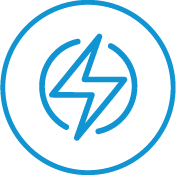What We’re Watching
July 2024
What We’re Watching is your go-to read for background on all NAFEM advocacy efforts, including energy, environment, regulations, supply chain, and taxes, tariffs and trade. What We’re Watching begins with NAFEM’s Federal Advocacy Tracker, a convenient reference list of pending issues with links to docket numbers (where applicable) and comments.
Should your company wish to communicate with state and federal elected officials on these or other topics, the Advocacy Action Center makes it easy to do so. The Center also includes a convenient state policy map for members to search for proposed regulations and legislation potentially impacting their businesses at the state level.
Federal Advocacy Tracker
| Issue | Docket No./Link | Status/Notes | ||
 ENERGY ENERGY | ||||
| Multiple categories (ACIM, CRE, WIC/F) | ||||
| 1 | DOE proposes to establish/amend certification provisions, labeling requirements and enforcement provisions for specific types of equipment to align with energy conservation standards | EERE-2023-BT-CE-0001 | – Comment period closed Nov. 28, 2023. – NAFEM did not submit comments | |
| Automatic Commercial Ice Makers | ||||
| 1 | DOE proposes energy conservation standards | EERE-2017-BT-STD-0022 | – NAFEM submitted comments. – Awaiting response | |
| 2 | DOE notification of data availability updating its analysis for above NOPR | EERE-2017-BT-STD-0022-0056 | – Comment period closed Oct. 25, 2023 – NAFEM did not submit comments | |
| Commercial Refrigeration Equipment | ||||
| 1 | DOE NOPR pertaining to energy conservation standards for commercial refrigerators, freezers and refrigerator-freezers. If approved as currently drafted, the proposed standards would take effect in late 2027. | EERE-2017-BT-STD-0007 | – NAFEM comments – NAFEM, AHRI and NAMA met with DOE, OMB and SBA Advocacy to discuss and urge no new standard ruling – NAFEM, CFESA, FEDA, FCSI, MAFSI, and NAMA collectively communicated industry opposition to Congress | |
| 2 | DOE test procedures | EERE-2017-BT-TP-0008 | – Final rule issued Oct. 26, 2023. – Compliance becomes mandatory for equipment testing starting Sept. 20, 2024 | |
| Walk-in Coolers/Freezers | ||||
| 1 | DOE final rule on test procedures | EERE–2017–BT–TP–0010 | – Final rule issued May 4, 2023 – Compliance mandatory Oct. 31, 2023 | |
| 2 | DOE notice correcting errors and omissions in above final rule | EERE–2017–BT–TP–0010 | – Final rule issued May 4, 2023. – Compliance mandatory Oct. 31, 2023 | |
| 3 | DOE proposes energy conservation standards | EERE-2017-BT-STD-0009-005 | – NAFEM/AHRI request for 30-day comment extension denied. – NAFEM comments. – Awaiting response | |
| 4 | DOE notification of data availability updating its analysis for above NOPR | EERE-2017-BT-STD-0009 | – NAFEM comments | |
| 5 | DOE updated its data analysis based on information received during the above comment period. | EERE-2017-BT-STD-0009 | – Comment period closed April 15 – NAFEM did not submit comments | |
| | ||||
| 1 | EPA releases drinking water standards for municipal water systems and organizations that provide their own drinking water | Final PFAS National Primary Drinking Water Regulation | – 5-year implementation period (2029) | |
| 2 | EPA final rule restrictions on the use of certain HFCs, establishes a process for submitting technology transitions petitions, and establishes recordkeeping and reporting requirements. | EPA-HQ-OAR-2021-0643-0026 | – Final rule issued Oct. 5, 2023 – Compliance dates vary depending on the subsector ranging from Jan. 1, 2025, to Jan. 1, 2028. | |
| 3 | EPA finalizes reporting and recordkeeping requirements for PFAS. The agency also modified the definition of PFAS. Anyone who has manufactured (including imported) a PFAS for a commercial purpose in any year since January 1, 2011, is covered by this rule. | EPA-HQ-OPPT-2020-0549 | – Final rule issued Oct. 11, 2023 – Compliance is mandatory 18 months after the effective date for manufacturers and 24 months after the effective date for small manufacturers. – “Small manufacturers” are defined here. | |
| 4 | EPA proposes rule to minimize HFC releases from equipment | EPA-HQ-OAR-2022-0606 | – Comment period closed Dec. 18, 2023 – NAFEM did not submit comments | |
| 5 | EPA proposes ban on all TCE use | EPA-OPPT-2020-0642-8026 | – Comment period closed Dec. 15, 2023 – NAFEM did not submit comments | |
| 6 | EPA lists final SNAP 26 approved refrigerants | Final rule | – Effective July 15 – Fact sheet | |
| | ||||
| 1 | DOC proposes rule to revise trade remedy procedures | 230424–0112 | – Comment period closed July. 10, 2023 – NAFEM did not submit comments | |
| 2 | Labor Dept. announced final overtime rule raising the minimum threshold with automatic increases every three years | 2024-08038 | – Effective Jan. 1, 2025 | |
| 3 | FTC issued final rule effectively banning non-compete agreements | 2023-00414 | – Effective Sept. 4 | |
| 4 | OMB proposes changes to regulatory decision-making and engagement process | OMB-2022-0011 | – NAFEM comments – Awaiting response | |
| 5 | SEC Climate Change Disclosure Rule | 3235-AN22 | – Final rule published March 28, 2024; SEC stayed rule pending judicial review April 4 | |
| 6 | The Regulatory Early Notice and Engagement Act would require federal agencies to provide information on their websites and to Congress one week after initiating new rulemaking activities. Required information would include the problem the rule is intended to address and whether the agency looked at alternatives to regulation. The public also would be invited to recommend how to accomplish the objectives of the proposed rule most effectively and at the least cost. | HR 8204 | ||
| | ||||
| 1 | FMC proposes rule prohibiting common carriers refusal of cargo space | 2023-12744 | – Comment period closed July 31, 2023 – NAFEM did not submit comments | |
| 2 | USTR requests comments on trade policy initiatives that promote supply chain resilience | USTR-2024-0002 | – Comment period closed April 22 – Public hearing May 2 | |
| | ||||
| 1 | USTR provides additional details on Section 301 tariff increases and exclusions | – Announcement | ||
| 2 | Additional anti-dumping tariffs announced on aluminum extrusions from 14 countries, on top of those previously announced | – International Trade Administration announcement | ||
| 3 | NAFEM joined hundreds of associations urging repeal of the Corporate Transparency Act that would require small business to report beneficial owners to the Treasury Dept. | – Letter of support | ||
| 4 | Tax Relief for American Families and Workers Act would restore immediate expensing of domestic R&D expenses, enhanced interest deductibility and 100% accelerated depreciation. | HR 7024 | – NAFEM letter of support – Passed House, with the Senate | |
| 5 | Death Tax Repeal Act would help family-owned companies currently faced with significant tax burdens following the death of a family member | S 1108 | ||
| 6 | Proposal to secure a permanent 20% deduction for qualified business income | Senate Main Street Tax Certainty Act of 2023 Companion House Bill HR 4721 | – NAFEM letter of support | |
| 7 | DOC BIS proposed rule to revise the Section 232 exclusions process | 2023-18328 | – NAFEM comments – Awaiting response – NAFEM also participated in comments by CAMMU and the NFTC TRC | |
| 8 | The Uyghur Forced Labor Disclosure Act would amend the Securities Act of 1934 to require disclosure of whether companies’ supply chains use forced Uyghur labor | HR 4452 | ||
| 9 | American Workers and Trade Competitiveness Act would reauthorize/revise the Trade Adjustment Assistance Program by: Expanding eligibility to additional workers, establishing a child and other dependent care allowance.Increasing the maximum benefit of wage insurance. Permanently extending the tax credit for health insurance costs and increasing the percentage of the credit.Extending the Generalized System of Preferences (GSP), which provides duty-free treatment to products imported from designated beneficiary countries. | HR 4276 | ||
Other items NAFEM is tracking

ENERGY
States actively setting energy-efficiency standards
In place or pending
- The following states have energy-efficiency standards in place or pending for a variety of commercial foodservice equipment: California, Colorado, Connecticut, Washington D.C., Maine, Maryland, Massachusetts, Nevada, New Hampshire, New Jersey, New York, Oregon, Rhode Island, Vermont and Washington1.
Proposed
- NAFEM awaits feedback on its comments to the California Energy Commission (CEC) over the state’s potential energy-efficiency standards for gas- and electric-powered commercial steam cookers, convection ovens, dishwashers and fryers.
- There is no update to pending Maryland Energy Administration energy-efficiency standards. According to the state’s proposal, refrigeration equipment must meet certain daily maximum energy consumption requirements. Dishwashers will need to meet ENERGY STAR® Version 2.0 requirements and steam cookers ENERGY STAR Version 1.2 requirements. Comments were due Jan. 29.
States require manufacturers to register with appliance standards databases
- The State Appliance Standards Database (SASD) is an important registration body for commercial food equipment and other manufacturers, with Massachusetts, New Jersey, New York, and Rhode Island requiring registration of commercial dishwashers, fryers, hot food holding cabinets, ovens and steam cookers. These states may issue financial penalties for products sold within their borders that don’t meet minimum energy-efficiency levels.
- California also requires manufacturers to certify the performance of refrigeration products sold in the state via its Modernized Appliance Efficiency Database System (MAEDbS). Information is not shared between MAEDbS and SASD, so manufacturers must register with both databases to sell products in the covered states.
ENERGY STAR® expands component inspection program
- ENERGY STAR is expanding its component inspection program in 2024 for commercial coffee and tea brewers, fryers, griddles, and hot food holding cabinets. The program expands to electric cooktops in 2025. Check here for more information.
- The current program already covers commercial steam cookers; dishwashers; convection, combi and gas-rack ovens; and commercial electric cooktops.

ENVIRONMENT
PFAS reduction efforts active at federal and state levels
Per- and polyfluoroalkyl (PFAS), or so called “forever chemicals,” are increasingly the focus of federal and state reduction efforts and outright bans. The chemicals are used widely in nonstick, water- and grease-resistant products, and some firefighting foams.
- The Environmental Protection AgencThe Environmental Protection Agency (EPA) finalized its reporting and recording requirements for PFAS under the Toxic Substances Control Act (TSCA). Additional insights are available in EPA’s PFAS Strategic Roadmap.
- EPA released long-awaited and controversial drinking water standards for specific PFAS substances. The standards establish maximum contaminant levels (MCL) of 4 parts-per-trillion (ppt) for PFOA and PFOS, and 10 ppt for PFNA, PFHxS and HFPO-DA, also known as “GenX Chemicals.” EPA also announced a 5-year implementation period. The standards apply to drinking water utilities and organizations that provide their own drinking water via a well or other resource.
- The Complex Article Coalition overview of current PFAS legislation at the international federal and state level is updated monthly and helps members keep track of myriad state activities.
- Canada’s Draft State of PFAS Report was produced to inform decision-making on PFAS in the country. Health Canada proposes that PFAS be treated as a class that may constitute a danger in Canada to human life or health.
EPA’s 2022 – 2026 strategic plan provides a glimpse of what’s to come
- EPA’s four-year strategic plan covering 2022 – 2026 details the vision, priorities, and strategies to accomplish the agency’s mission over the next four years. The agency also issued a brief overview of its upcoming efforts.
Updated HFC information available on EPA Data Hub
- In keeping with the HFC Allocation Program of the American Innovation and Manufacturing (AIM) Act, EPA updated hydrofluorocarbon (HFC) data including imports, exports, inventory, and destruction as well as allowance transfers and expenditures. Information is available on the EPA HFC Data Hub.
NY State considers tightening HFC standards
- Proposed hydrofluorocarbon (HFC) reductions in New York State could impact manufacturers of automatic commercial icemakers (ACIM) and commercial refrigeration equipment (CRE). Comments were due March 19.
Extended producer responsibility (EPR) efforts in states
- New York Senate bill 6105 now has a companion bill in the state’s Assembly – 10624. Both bills propose to establish an extended producer responsibility program for appliances and refrigerants, including commercial appliances. The effort is similar to Quebec’s SORAC (Commercial Appliance Recovery Society) for commercial and industrial refrigeration/freezing equipment that NAFEM helped formulate.
- Multiple states have approved or are considering EPR efforts thus far primarily aimed at consumer, single-use packaging.
Reducing food loss and waste announced as new administration priority
- Feeding America® estimates that 38% of food grown and produced in the U.S. is wasted. This, combined with EPA’s research that shows that 58% of methane emissions from landfills are from food waste, is driving the administration’s National Strategy for Reducing Food Loss and Recycling Organics. The goal is to reduce food loss and waste by 50% by 2030. In addition to business and consumer behavior change, the initiative also will test innovative approaches to reducing food waste across the supply chain.
Gas stove debates shifts to November ballot in California
- In November, voters in Berkeley, California will decide whether the city should tax large buildings that use natural gas. The proposed tax is estimated to raise $23 million annually that, if approved, would be dedicated to building electrification. The ballot initiative comes after a federal appeals court declined to rehear the April 2023 decision by the Ninth Circuit Court of Appeals to overturn the Berkeley, California ban on natural gas hookups in new buildings. In May, Berkeley halted enforcement of its policy, and other cities in the San Francisco Bay Area have done the same.
- The New York ban on natural gas and other fossil fuels in most new buildings remains. The ban applies to new buildings shorter than seven stories by 2026, and taller buildings by 2029.
- More than 100 U.S. cities have moved to restrict gas-powered appliances. Most of these bans focus on new construction. Members are advised to check local requirements as this is an evolving situation.

REGULATIONS
Colorado introduces first state bill to address potential AI discrimination
- Colorado became the first U.S. state to govern artificial intelligence (AI) when Governor Polis signed Senate Bill 24-205. The law, which takes effect in 2026, requires those developing and using the technology to ensure that AI-generated hiring, banking and housing decisions avoid “algorithmic discrimination.”
NAFEM advocates with others for balanced regulations for U.S. manufacturers
- NAFEM is a member of the Manufacturers for Sensible Regulations coalition, an initiative created by the National Association of Manufacturers (NAM), to support manufacturing competitiveness. Data shows that the regulatory cost for small U.S. manufacturers is $34,671 per employee per year, more than three times the cost to the average U.S. company. Coalition members are urging the White House to protect jobs, communities and economic growth by adding a manufacturing adviser to the White House staff to coordinate and balance regulatory efforts among agencies.
Prop 65 labeling requirements require regular monitoring
- California’s Proposition 65 – The Safe Drinking Water and Toxic Enforcement Act – requires companies to provide warning labels to notify people of exposure to more than 1,000 chemicals known to cause cancer, birth defects or other reproductive harm. While NAFEM reports on proposed changes in the Advocacy Update newsletter, we also recommend members closely monitor the Prop 65 changes impacting their businesses.

SUPPLY CHAIN
Coalition pressing California to consider supply chain in environmental goals
- NAFEM continues to work with the almost 200 members of the California Sustainability Coalition which continues to press Gov. Newsom to consider an alternative to achieving the state’s environmental goals without further disruption to the critical, supply chain work being performed by the state’s ports, transport and other sectors.
Mexico working on alternative to Panama Canal
- Mexico continues work on its trans-isthmus trade corridor. Ships would unload their cargo at either Salina Cruz, Oaxaca or Coatzacoalcos, Veracruz, with the cargo then transported 303 kilometers (about 188 mi) across the isthmus via rail and reloaded on another ship.
Know your supply chain: Restricted entities listed on government database
- The International Trade Administration maintains the Consolidated Screening List (CSL) of parties with which the U.S. restricts certain exports, reexports or transfers of items, including those addressed under the Uyghur (China) Forced Labor Prevention Act (UFLPA), Russia/Belarus sanctions and others. The list is updated daily, and email updates are available at the link above.

TAXES, TARIFFS & TRADE
Hundreds of sanctions and restrictions in place against Russia and Belarus
- Hundreds of sanctions and restrictions are in place against Russia and third-parties allegedly helping Russia evade sanctions. The departments of Commerce, State and Treasury are acting against individuals and organizations.
Section 232 news
- In comments to the U.S. Department of Commerce (DOC) Bureau of Industry and Security’s (BIS) notice of proposed rulemaking (NOPR), NAFEM requested three actions to improve the exclusion process for the Section 232 steel and aluminum tariffs:
- Continue to improve the objection form and require support documentation to increase transparency and fairness of the process.
- Establish a public request process for industry-specific, general-approved exclusions.
- Permit trade associations to submit exclusion requests on behalf of members not importers of record or provide an alternative option for small- and medium-sized companies to participate in the process.
- At year end, the U.S. agreed to continue the current tariff rate quota (TRQ) on EU steel and aluminum products imported into the U.S. At the same time, the EU agreed to extend the suspension of retaliatory tariffs on U.S. steel and aluminum products until March 2025, after U.S. and EU elections.
- NAFEM continues to advocate for removal of Section 232 tariffs on steel and aluminum imports.
Section 301 news
- Immediately following the publication of the United States Trade Representative’s (USTR) statutory four-year review of the Section 301 tariffs on imports from China, the Biden administration increased tariffs on $18 billion of to-be-determined steel and aluminum products from 7.5% to 25%. These new tariffs are on top of the current “national security“ tariffs of 25% on steel and 10% on aluminum. The president also increased tariffs on semiconductors from China from 25% to 50% by 2025.
- NAFEM continues to advocate for removal of Section 301 tariffs on imports from China.
Aluminum extrusions subject to upcoming antidumping duties
- Preliminary anti-dumping tariffs on aluminum extrusions from 14 countries were announced May 2 by the U.S. Department of Commerce International Trade Administration. Tariffs range from 4.19% to 376.85% for imports from China, Columbia, Ecuador, India, Indonesia, Italy, Malaysia, Mexico, Korea, Taiwan, Thailand, Türkiye, United Arab Emirates and Vietnam. Following further study, final tariff decisions are anticipated Sept. 5. These new tariffs are in addition to those previously announced on aluminum extrusions from China, Indonesia, Mexico and Türkiye.
- The broad scope covers semi-finished assemblies and parts, including glass refrigerator shelves, appliance parts and subassemblies, fin evaporator coils and systems for refrigerators, heating and cooling system components, heat sinks and electrical conduits.
- A complete listing of the tariffs for each country and the producer/exporter specific rates are available here.
Focus on shipments of goods produced with Uyghur labor continues
- U.S. Customs and Border Protection (CBP) closely watches for goods covered under the Uyghur (China) Forced Labor Prevention Act (UFLPA) that largely prohibits importing any items mined, produced or manufactured wholly or in part in the Xinjiang Uyghur Autonomous Region of the People’s Republic of China. Industrial and manufacturing materials represent the second highest volume of denied shipments; apparel is first. To clarify the UFLPA, CBP published FAQs, best practices and guidance.
Vague cargo descriptions no longer allowed by CBP
- U.S. Customs & Border Patrol (CBP) now requires specific cargo descriptions rather than vague descriptions like “daily necessities,” “accessories” and “parts.” In most cases, CBP will send messages requesting these descriptions via ACE Cargo Release after release of the cargo. Brokers and importers are expected to correct the issue with the shipper and bill of lading issuer for compliance on future shipments.
OTHER TOPICS?
If there is a topic you would like NAFEM to address, please contact us at advocacy@nafem.org.